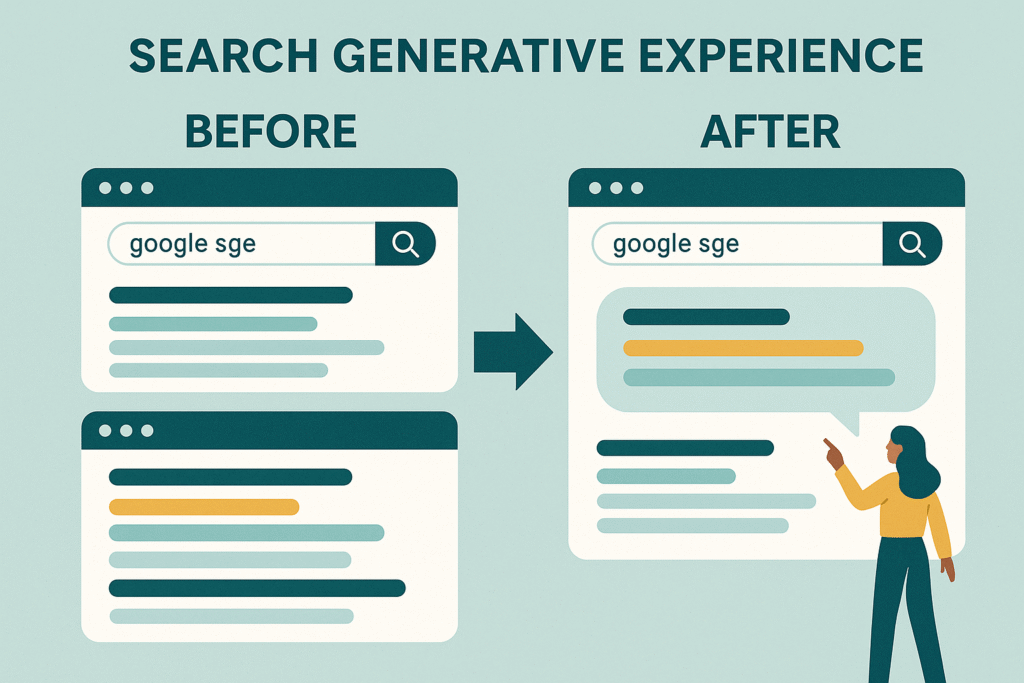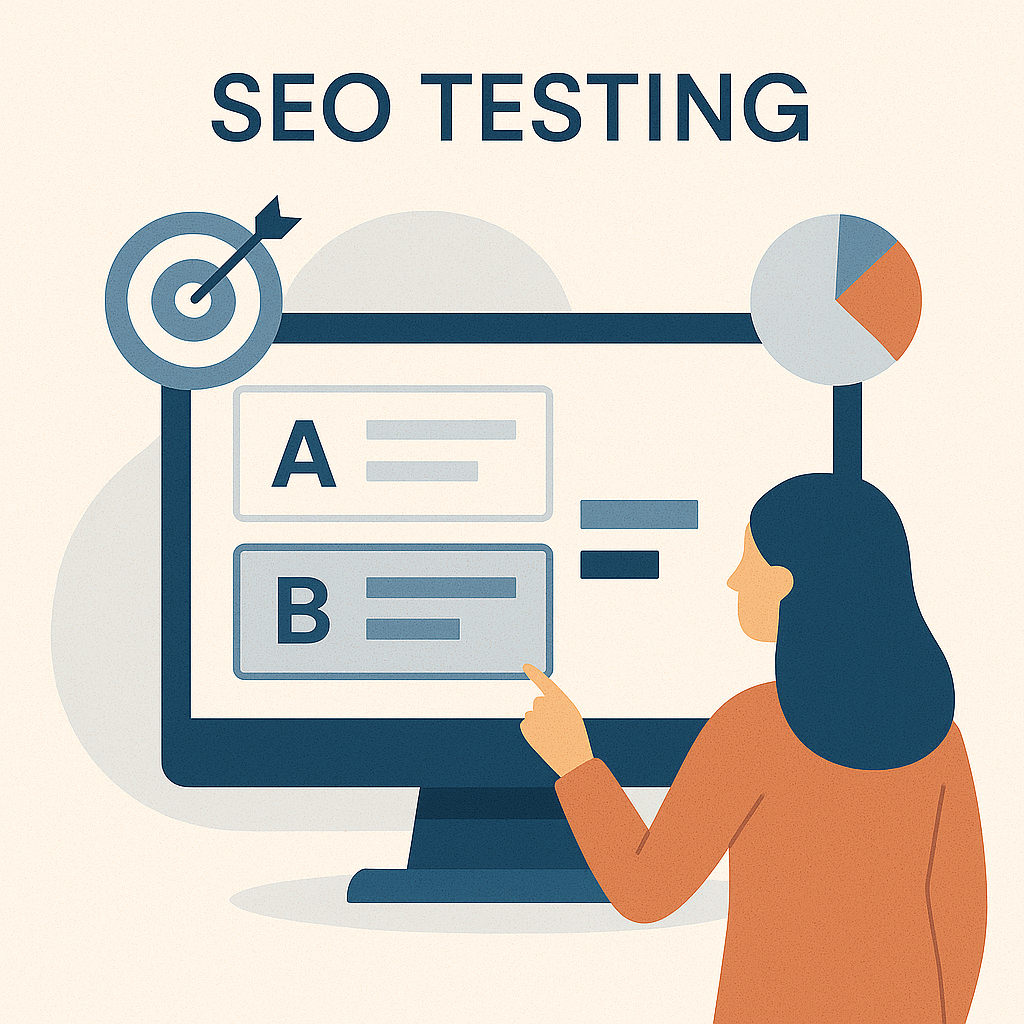5 SEO Trends You’re Not Hearing About (But Should Be Watching in 2025)
1. Search Generative Experience (SGE) Is Reducing Organic Clicks
With the global rollout of Google’s Search Generative Experience (SGE), AI-generated answers now dominate top of the google search results space.This evolution is dramatically reducing traditional blue link visibility.
Why It Matters:
Even for queries with high commercial intent, users are finding answers directly in the SGE response. Early Google Search Console data shows a CTR drop of up to 18% for some transactional keywords post-SGE.
Pro Tip: Use Google Search Console to track your most important keywords and compare how they performed before and after the launch of Google’s AI-powered SGE, so you can spot any drop in clicks or visibility. To help your content appear in AI-generated answers, implement schema markup and include FAQ sections on your pages.
Read More: How to Adapt Your SEO Strategy for Google’s SGE Era And Still Get Clicks

2. Topical Authority Is Replacing Backlink Dependence
Google’s algorithm now gives more weight to content that is deeply informative and clearly written by experts, rather than just focusing on how many backlinks a page has.
🚀 Example of Topical Authority Beating High Domain Authority
In the fitness niche, a small website with a Domain Rating (DR) of just 22 was able to outrank industry giants like Healthline. How?
It used a pillar-cluster content strategy focused on calisthenics workouts.
Domain Rating (DR):
A score (from 0 to 100) that predicts how strong a website’s backlink profile is. Big sites like Healthline often have very high DRs (80+), but that alone isn’t enough anymore.
✅ Pillar-Cluster Strategy:
A method where you:
- Create one comprehensive pillar page on a broad topic (e.g., “Calisthenics Workouts”)
- Support it with several cluster pages covering related subtopics (e.g., “Beginner Calisthenics Routines,” “Calisthenics for Strength,” etc.)
- Internally link these pages to build topical depth and authority.
Action Step: Build topical authority through content silos and internal linking. Group your blog posts into clear, user-focused topic clusters.
Read More: How Google’s E-E-A-T Impacts SEO in 2025: A Practical Guide to Ranking With Trust

3. JavaScript Is Wasting Crawl Budget
More websites are using dynamic frameworks like React or Angular without considering how Googlebot renders them. Poor server-side rendering (SSR) leads to bloated crawl requests and wasted crawl budget.
How to Identify: Run your site through tools like Screaming Frog or PageSpeed Insights.
Pro Tip: If you’re using client-side rendering, adopt hybrid or server-side rendering. Also, monitor crawl stats in Google Search Console under “Crawl Stats” to detect inefficiencies.
Read More: JavaScript SEO Made Simple: Why It Matters and How to Avoid Common Pitfalls

4. Semantic Proximity Has Replaced Keyword Density
Stuffing your content with the same keyword over and over no longer works. In fact, even using exact keyword matches is becoming less important. Today, Google’s advanced language models—like BERT and MUM—can understand the meaning behind your words, the tone you’re using, and how closely related certain words are within your content.
Real-World Example: Web pages that naturally include related phrases—like “energy-boosting morning habits” alongside terms like “coffee alternatives” and “light exercise routines”—are now ranking higher in search results than pages that just repeat the same keyword over and over.
Patent Insight: A Google patent (US9449105B1) highlights how analyzing the context and co-occurrence of words can improve the understanding of user search queries, leading to more relevant search results.
Read More:📈 Why “Semantic Proximity” Is the Secret Sauce to Higher Google Rankings

5. Old SEO Rules Don’t Work Alone—Now You Need to Test What Actually Works
Search results today are highly personalized, and tools like Google’s SGE show different results to different users. That means old, one-size-fits-all SEO strategies aren’t enough anymore.
What You Should Do:
Start testing different parts of your pages—like titles, meta descriptions, and internal links—using tools such as SEOTesting.com, SplitSignal, or even by setting up simple A/B tests on your own site.
Real Example:
A website increased its click-through rate (CTR) by 12% just by testing question-style titles instead of keyword-heavy ones on their blog pages.

Conclusion
The future of SEO isn’t just about keywords or links—it’s about adaptation. These five under-the-radar trends are already influencing how pages rank and how users engage. If you want to stay ahead in 2025, start tracking SGE performance, building topical authority, optimizing your rendering setup, and running real tests. SEO isn’t just evolving—it’s transforming.
